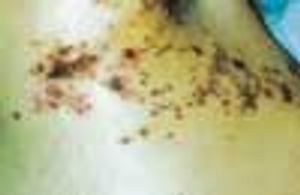Articles by Joe Monroe, PA-C

Tortuous, dilated varicosities; multiple smaller caliberabnormal perforating vessels; and chronic brawnyedema of chronic venous insufficiency (CVI) were seenon a 70-year-old man’s left leg (A). He reported that theedema and discoloration had worsened over the last15 years. The brawny edema stopped just above theankle, indicating that compression by the patient’s sockcontrolled the signs and symptoms of CVI.

Telltale skin lesions of syphilis, gonorrhea, human papillomavirus infection, and Haemophilus ducreyi infection.

Telltale skin lesions of syphilis, gonorrhea, human papillomavirus infection, and Haemophilus ducreyi infection.
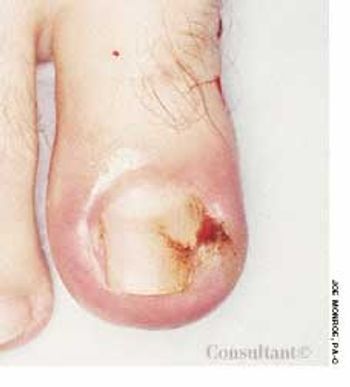
A 15-year-old experienced pain in her toe, particularly when pressure was applied to the foot. An ingrown toenail was the cause of her discomfort.
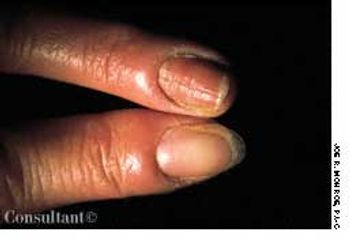
After 6 months of suffering with an infection on her finger and several failed courses of antibiotic therapy, a 53-year-old woman sought a second opinion.
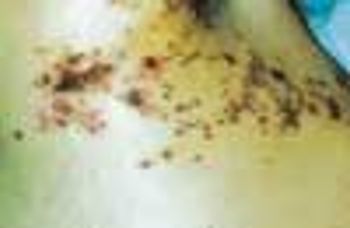
Herpesvirus Infections
ByEdmond K. H. Liu, MD,Alexander K. C. Leung, MD,Virendra A. Parikh, MD,Joe Monroe, PA-C,Scott J.m. Lim, MD,And Paul Shields, MD Ten days before presenting for evaluation, a 69-year-old man began to experience neuralgic pain and noticed the eruption of painful erythematous macules and papules on the right side of his chest. Within 24 to 72 hours, vesicles and pustules arose at the site. One week after onset, several of the lesions dried and crusted.
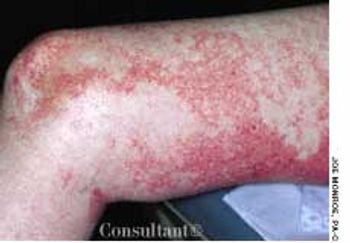
A 44-year-old woman had a painful, burning rash for 4 months. The erythematous eruption was evident on the thighs, fingers, buttocks, abdomen, and perineal and intergluteal areas. Application of triamcinolone cream and emollients offered no relief.
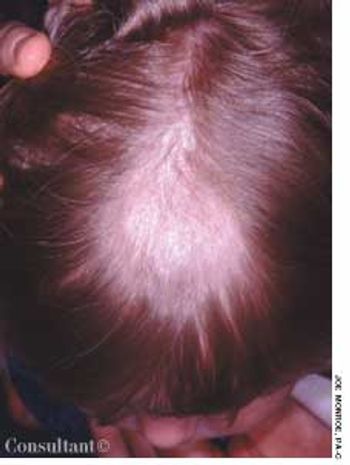
The parents of a 3-year-old girl sought evaluation of their daughter's hair loss. During the past several months, a large patch of alopecia with scaling had developed. The differential diagnosis included seborrhea, trichotillomania, and tinea capitis.
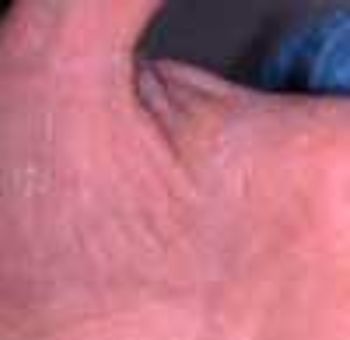
For years, a 39-year-old man had an eruption on his hand, which seemed to be controlled with topical corticosteroids. The patient was a rancher.

The parents of a 12-year-old sought a consultation for the “cyst” that had appeared on their daughter's lower back. The lesion was first noticed 2 months earlier upon the child's return from a trip to Belize.
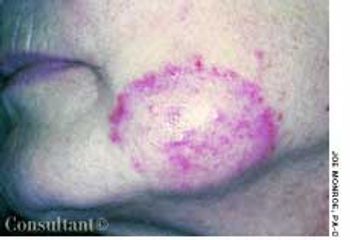
A 62-year-old woman presented with an itchy, annular eruption on her face of 3 months' duration. A topical antifungal was prescribed, but the slow response to therapy prompted a switch to a topical corticosteroid (triamcinolone 0.1%). The lesion not only failed to clear but became larger.
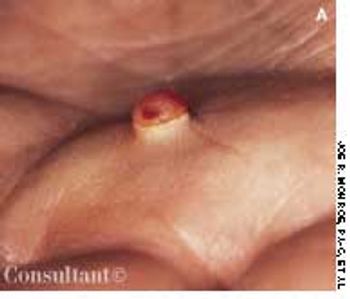
A 16-year-old boy removed a small sliver of wood from the palm of his hand with a pocket knife. However, the fledgling “surgeon” created a small puncture wound during this operation. Over the next month, a small, moist, friable papule grew at the site.
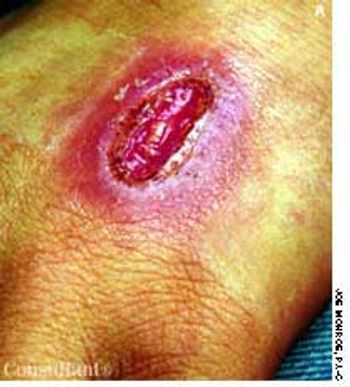
A 30-year-old woman had an extensive psychiatric history of anxiety and depression. She was concerned that the numerous lesions on her body might be signs of possible infection or infestation. The patient was undergoing treatment for multiple addictions to drugs, primarily methamphetamine (“crank”).
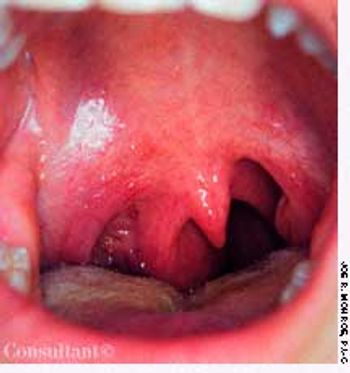
After 4 days of fever and a very sore throat, an 18-year-old man requested medical treatment. The patient's speech was barely intelligible because of the fullness in his throat. He was able to communicate, however, that he had great difficulty swallowing because of the throat pain and fullness.
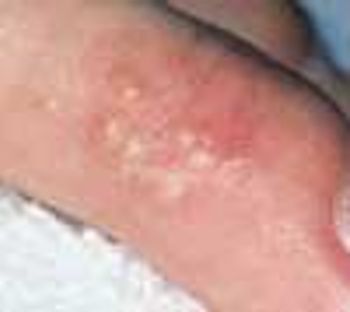
A 40-year-old dental assistant requested a prescription for antibiotics to treat the acute outbreak of painful, deep blisters that had recurred on her index finger. Prior eruptions of similar lesions had been diagnosed as staphylococcal infections and were treated with antibiotics.
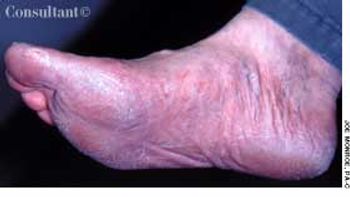
A 70-year-old man first noticed this skin condition when he returned from the South Pacific at the end of World War II. Over the years, the rash has itched only occasionally; however, during a recent spate of hot weather, the eruption became highly pruritic. Applications of an over-the-counter 1% hydrocortisone ointment exacerbated the condition.
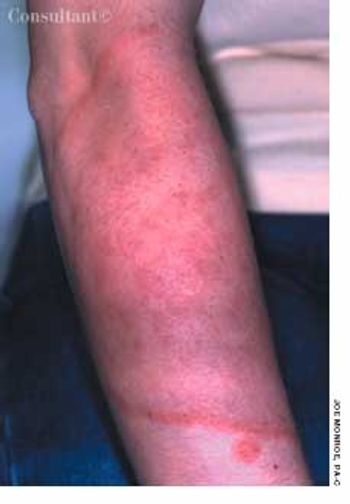
A pruritic lesion on the arm of a 26-year-old woman had grown to 22 cm while she was "treating" the eruption with a topical corticosteroid.
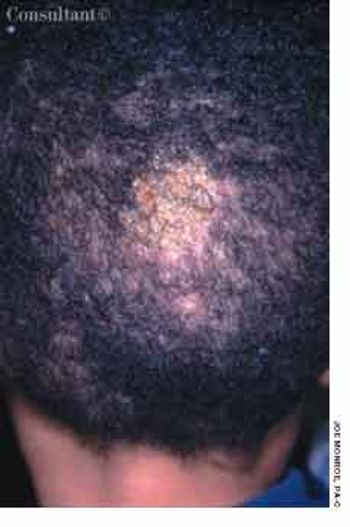
A 6-year-old African American boy is referred for evaluation of “cellulitis,” which had persisted for several weeks. The condition had failed to respond to oral antibiotics prescribed by another practitioner.
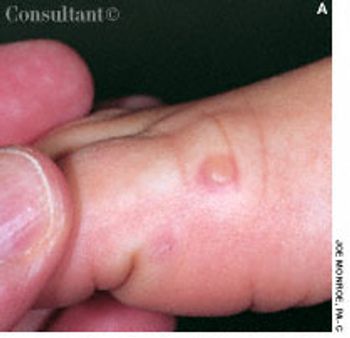
A 10-year-old girl complained of slight fatigue and malaise. A 6-mm tense blister had developed on the dorsum of her right foot, lesions had arisen on the palms, and a pinpoint, whitish ulcer had erupted anterior to the frenular attachment.
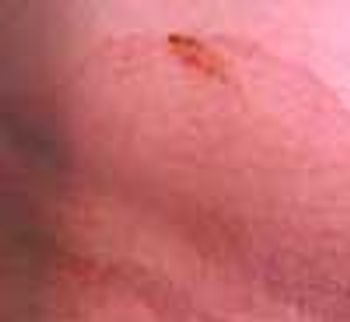
For more than 20 years, a 55-year-old man had a faintly erythematous, papulosquamous rash with arciform borders on his groin and waistline. The rash had been treated with a variety of medications. Topical and oral antifungals and antibiotics and topical corticosteroids had been used but to no avail. No laboratory tests had been performed.
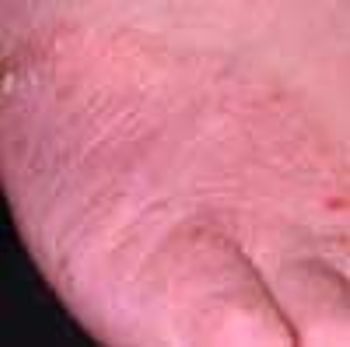
A pruritic rash of unknown origin had been present on the dorsum of a 26-year-old woman's foot for several months. Despite oral antibiotic therapy and applications of antifungal creams and topical corticosteroids, the condition did not resolve.
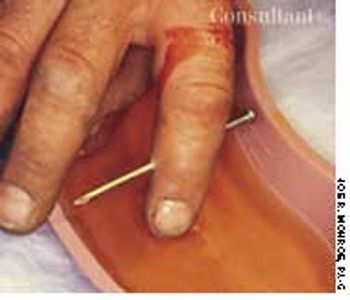
While on the job, a 24-year-old construction worker accidentally shot a nail through his right index finger with a nail gun. Roentgenographic studies revealed no damage to the bone. No neurovascular deficit was noted on examination.
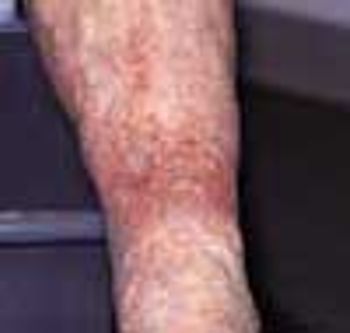
Tortuous, dilated varicosities; multiple smaller caliber abnormal perforating vessels; and chronic brawny edema of chronic venous insufficiency (CVI) were seen on a 70-year-old man's left leg. He reported that the edema and discoloration had worsened over the last 15 years. The brawny edema stopped just above the ankle, indicating that compression by the patient's sock controlled the signs and symptoms of CVI.
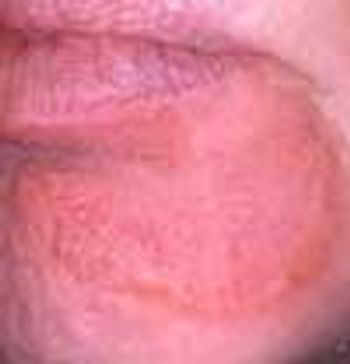
An eruption on the face of a 49-year-old woman had been misdiagnosed as a staphylococcal infection; the rash failed to respond to oral and topical antibiotics. A mid-potency topical corticosteroid also had been tried, but the eruption worsened.
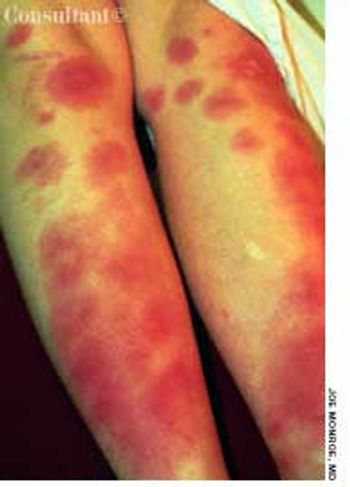
An otherwise healthy 36-year-old woman complained of multiple tender, hot, bright red nodules of acute onset on her thighs and anterior tibial areas. Antibiotics had been given for a suspected infection, but the rash persisted.
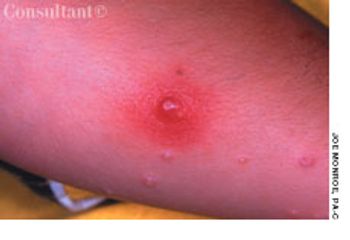
A papule on the leg of an 11-year-old boy had suddenly developed into a slightly tender pustule. The pustule had not responded to oral cephalexin and topical mupirocin prescribed by another clinician.
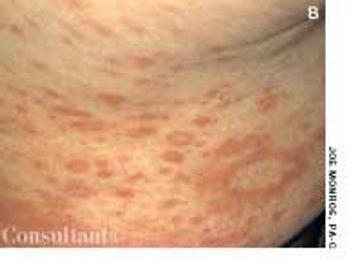
For 3 years, a 53-year-old man had noted increasingly extensive changes in his skin, including facial thickening, a progressive reddish tinge, and annular lesions on his trunk. He also complained of itching on the periphery of his face.
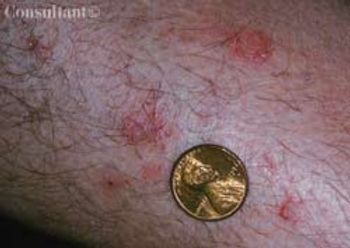
The multiple, uniformly scaly, coin-shaped, papulosquamous lesions shown here on the lower leg of a 61-year-old man had persisted for 3 months despite application of topical clotrimazole and 1% hydrocortisone. The rash involved only the legs and was variably pruritic. The patient had a long history of dry skin.

A 72-year-old woman presented for evaluation of a large swelling onher dorsal wrist, which had been present for 2 years. The protuberancewas not painful or tender; the patient was otherwise in goodhealth.

A 50-year-old man had a long-standing rash on both soles. The patient’s toenails were yellow and dystrophic. These physical findings strongly suggested moccasin-variety tinea pedis and onychomycosis.



























